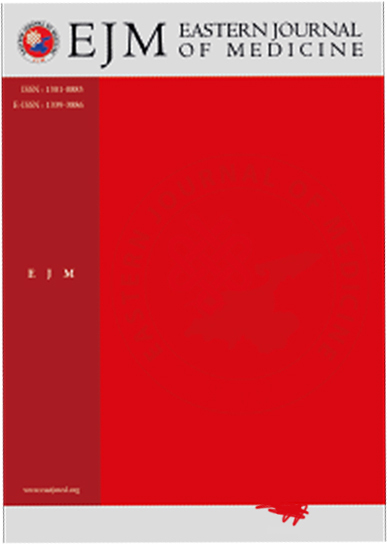Diagnostic role of hysteroscopy in women with abnormal uterine bleeding: A single-center retrospective study
Samet Osman Gunkaya1, Meltem Tekelioğlu1, Suat Karataş2, Fatih Sahin3, ilkhan keskin4, Melih Bestel5, Niyazi Tug11Department of Obstetrics and Gynecology, Sancaktepe Sehit Prof Dr Ilhan Varank Training and Research Hospital, University of Health Sciences, Istanbul, Turkey.2Bahcelievler Memorial Hospital, Department of Obstetrics and Gynecology, Istanbul, Turkey.
3Istinye University Medical Park Gaziosmanpaşa, Department of Obstetrics and Gynecology. Istanbul, Turkey.
4Bartin State Hospital, Clinic of Obstetrics and Gynecology, Bartin, Turkey
5Esenyurt University Private Esencan Hospital, Clinic of Obstetrics and Gynecology, Istanbul, Turkey.
INTRODUCTION: Hysteroscopy is a minimally invasive technique that has advantages over blind curettage, such as direct visualization of the intrauterine cavity, biopsy of the suspicious area, and simultaneous treatment of benign intracavitary lesions. The study aims to evaluate the diagnostic role of hysteroscopy in endometrial and focal intracavitary lesions.
METHODS: This retrospective study was conducted in the department of obstetrics and gynecology of a tertiary center between January 2018 and July 2022. Diagnostic hysteroscopy was performed on women with abnormal uterine bleeding, and lesions seen during hysteroscopy were noted and excised using a resectoscope. Uterine sampling with blind curettage was applied to all patients. The resected lesions and uterus samples were evaluated histopathologically.
RESULTS: Diagnostic accuracy of hysteroscopy was higher than 90% in each group classified according to morphology of endometrium as normal, atrophic and hyperplastic. Sensitivity, specificity and diagnostic accuracy were higher than 90% for focal intracavitary pathologies. Sensitivity for endometrial hyperplasia and cancer were 80% and 50%, respectively.
DISCUSSION AND CONCLUSION: Hysteroscopy is exceedingly viable for distinguishing intracavitary pathologies such as polyps, myomas and foreign bodies in ladies with abnormal uterine bleeding. However, for the diagnosis of endometrial hyperplasia and cancer, a hysteroscopy-guided biopsy with uterine curettage is needed to be combined with hysteroscopy.
Manuscript Language: English














